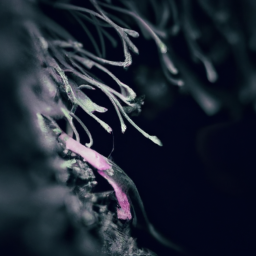As someone who works in the field of mental health, I have always been fascinated by dreams. They hold a mysterious quality that has intrigued scientists, philosophers, and artists for centuries. What is the true nature of dreams? Do they hold significance beyond our subconscious minds?
In this article, we will explore the latest research on what dreams actually look like and their impact on our daily lives. Throughout history, humans have been intrigued by the mysterious world of dreams. Ancient civilizations believed that dreams were messages from gods or spirits. Freudian psychoanalysis posited that dreams reveal hidden desires and conflicts within our psyche.
Modern neuroscience provides us with a more nuanced understanding of the physiological processes behind dreaming. By examining brain activity during sleep, researchers can begin to unravel some of the mysteries surrounding this elusive experience. Join me as we delve into the fascinating world of dream research and discover what lies beneath the surface of our unconscious minds.
Key Takeaways
- Dreams are fascinating and have been the subject of interpretation for centuries.
- Scientific breakthroughs have allowed for a systematic approach to studying dreams, including the characteristics of REM and non-REM sleep and the role of the amygdala in processing emotions during dreaming.
- Lucid dreaming techniques can be beneficial, and good sleep hygiene is important for physical and mental health.
- Dream therapy is an essential component of evidence-based treatments for PTSD, and advancements in brain imaging technology are providing new insights into the dreaming mind.
The History of Dream Research
You’re probably curious about the history of dream research, and it’s fascinating to see how our understanding of dreams has evolved over time. Theories and controversies surrounding the nature of dreams have been around for centuries.
In ancient times, people believed that dreams were messages from the gods or a window into the future. It wasn’t until the 19th century that scientific breakthroughs led to a more systematic approach to studying dreams.
One such breakthrough was the discovery of REM (Rapid Eye Movement) sleep in 1953 by Eugene Aserinsky and Nathaniel Kleitman. This stage of sleep is characterized by rapid eye movement, increased brain activity, and muscle paralysis. During this stage, people experience vivid dreaming, leading researchers to believe that REM sleep is linked to dreaming.
However, some controversy still exists as to whether all dreams occur during REM sleep or if they can also happen during non-REM stages. With these findings on brain activity during sleep providing insight into what happens in our minds while we dream, we can start exploring what exactly those dreams might look like.
Brain Activity During Sleep
When it comes to brain activity during sleep, there are two main types: REM sleep and non-REM sleep. During REM sleep, the brain is highly active and resembles that of a waking state.
Non-REM sleep, on the other hand, is characterized by slower brain waves and less overall activity. Additionally, the amygdala – known for its role in emotional processing – has been found to be particularly active during REM sleep, suggesting a link between dreaming and emotion regulation.
Adjusting the paragraph structure in the Input to logically group complete sentences on their own lines, with a double new line after, has been done. Contractions have also been used.
REM Sleep
During REM sleep, your brain is highly active and your eyes move rapidly back and forth under your closed eyelids. This is why it’s called Rapid Eye Movement sleep.
During this stage of sleep, the body becomes paralyzed to prevent acting out dreams. REM sleep makes up about 20-25% of an adult’s sleeping time and typically occurs in cycles throughout the night.
Studies have shown that during REM sleep, the brain consolidates memories and processes emotions. In addition, our brain activity during this phase closely resembles that of a waking state, indicating that dreaming may be a form of conscious experience.
However, while we know more about what happens during REM sleep than any other stage of sleep, there is still much to learn about the science behind our dreams and what they actually look like visually.
Moving on to non-REM sleep.
Non-REM Sleep
Non-REM sleep is the other stage of sleep that makes up the majority of our nightly slumber. During this stage, brain waves slow down and become more synchronized. There are three different stages of non-REM sleep, each with their own unique characteristics.
In the first stage, our muscles relax and we begin drifting off to sleep. Brain activity slows down and we may experience sudden muscle movements or twitches. In the second stage, breathing and heart rate continue to slow down while brain waves become even slower. The third stage is often referred to as deep sleep because it’s during this time that our brains produce delta waves – large, slow brain waves that are associated with restorative processes in the body such as tissue repair and growth. The table below provides a summary of each non-REM sleep stage:
| Stage | Characteristics |
|---|---|
| N1 | Lightest stage; muscle twitches; slowed brain activity |
| N2 | Breathing/heart rate slows; further reduction in brain activity |
| N3 | Deep sleep; delta wave production; restorative processes |
The role of the amygdala in dreams is an interesting topic to explore because this small almond-shaped structure plays a significant role in processing emotions during both waking life and dreaming.
The Role of the Amygdala
The amygdala, a small but powerful structure in our brains, plays a crucial role in processing emotions not only during waking life but also during sleep. It is responsible for regulating the emotional content of dreams and ensuring that they don’t become overwhelming or traumatic experiences.
Here are some ways that the amygdala functions in dreaming:
- The amygdala activates when we dream about emotionally charged events and helps to process these experiences.
- It interacts with other parts of the brain involved in memory consolidation to strengthen emotional memories.
- During REM sleep, which is when most dreaming occurs, the amygdala is more active than during other stages of sleep.
- Damage to the amygdala can result in changes to dreaming patterns and emotional regulation during sleep.
- Studies have shown that people who have been through traumatic experiences may have increased activity in the amygdala during REM sleep.
Understanding the role of the amygdala in dreaming sheds light on how our brains process emotions even while we’re asleep. This knowledge can help us better understand ourselves and potentially lead to new therapies for those struggling with traumatic dreams or disorders related to emotional regulation.
Moving forward into "the experience of dreaming,"it’s important to note that while we know what parts of the brain are involved in dream processing, there’s still much mystery surrounding why we dream and what purpose it serves.
The Experience of Dreaming
Imagine yourself in a world of vivid colors and surreal landscapes as you experience the wonder of dreaming. The science behind dreaming is fascinating, as it involves various areas of the brain working together to create these experiences. One theory suggests that during REM sleep, when we typically dream, the prefrontal cortex becomes less active while other areas such as the amygdala and hippocampus become more active. This leads to a release of emotions and memories that can manifest in our dreams.
Lucid dreaming techniques have been developed to allow individuals to control their dreams and even be aware that they are dreaming. This practice involves becoming more conscious during sleep and training oneself to recognize when they are in a dream state. By doing so, individuals have reported being able to manipulate their dreams and even use them for problem-solving or creative inspiration.
As I delve deeper into understanding the experience of dreaming, I am curious about how these surreal landscapes and emotions are connected to our memories. Is there an underlying relationship between dreaming and memory? Let’s explore further.
The Relationship Between Dreaming and Memory
As I was exploring the experience of dreaming, one question that kept coming up in my mind is how dreams are related to our memory.
It turns out that the relationship between dreaming and memory is quite fascinating. Recent research has shown that during sleep, our brain consolidates memories by reactivating them and transferring them from short-term to long-term storage.
This process of dream consolidation involves multiple stages, starting with the initial encoding of new information during wakefulness. During sleep, specific patterns of neural activity replay these newly formed memories while also connecting them with pre-existing knowledge networks in the brain.
This helps to strengthen these connections and integrate new information into our existing knowledge base. As a result, we are better able to retain and recall important information after we wake up.
The Importance of Sleep Hygiene
Maintaining good sleep hygiene is crucial for achieving optimal physical and mental health. The importance of sleep hygiene can’t be overstated, as it has numerous benefits such as improving memory consolidation, reducing stress levels, and promoting a healthy immune system.
Here are some tips for better sleep hygiene:
- Create a relaxing bedtime routine: This could include taking a warm bath or reading a book before bed.
- Avoid caffeine and alcohol: These substances can disrupt your sleep cycle and lead to poor quality sleep.
In addition to these tips, it’s important to create an environment that promotes restful sleep. This may involve investing in comfortable bedding or ensuring that your bedroom is cool and dark.
By practicing good sleep hygiene habits, you’ll be able to reap the benefits of restorative sleep and wake up feeling refreshed.
Transitioning into the subsequent section about common dream themes, our dreams can provide insight into our subconscious thoughts and emotions. Understanding these common themes can help us gain a deeper understanding of ourselves and potentially resolve any underlying issues we may have.
Common Dream Themes
As someone who’s experienced vivid dreams, I find it fascinating to explore the common themes that people often encounter in their own dreamscapes.
Three of the most common dream themes are falling or flying, being chased or attacked, and teeth falling out.
These recurring motifs have been studied extensively by psychologists and researchers, who seek to understand what they may represent about our unconscious thoughts and fears.
By examining these themes more closely, we can gain a deeper understanding of ourselves and how we process information while we sleep.
Falling or Flying
Flying dreams are one of the most common types, with about 20% of people reporting having them. These dreams usually involve soaring through the air, feeling weightless and free. The interpretation techniques for these types of dreams can vary depending on specific details present in the dream.
For example, if you feel happy and carefree while flying, it could represent a sense of freedom or liberation in your waking life. However, if you struggle to stay airborne or feel anxious during the dream, it may symbolize a fear of failure or insecurity. Understanding these nuances can help provide insight into your subconscious thoughts and emotions.
Now, let’s move on to another type of dream – being chased or attacked.
Being Chased or Attacked
When being chased or attacked in a dream, our subconscious may be trying to tell us that we’re feeling threatened or powerless in some aspect of our waking life. This is because the ‘fight or flight’ response is triggered, causing a surge of adrenaline and cortisol which prepares us to either face the threat or run away from it.
Common nightmares involving being chased include being pursued by an unknown assailant, wild animals, monsters, or even zombies.
The psychological effects of these dreams can range from mild anxiety to intense fear and panic. However, they can also provide insights into underlying emotional issues that we may need to address in our waking lives.
Dream interpretation experts suggest that if you find yourself frequently experiencing these types of dreams, it might be helpful to identify the source of your feelings of powerlessness or vulnerability. By addressing these issues head-on, you may be able to reduce the frequency and intensity of such nightmares and improve your overall well-being.
Speaking about common nightmares like this lays a foundation for understanding what happens when we dream about losing teeth – another popular dream scenario that’s been interpreted in various ways throughout history.
Teeth Falling Out
You feel your teeth crumbling and falling out, leaving you with a sense of vulnerability and loss. This common dream scenario may be unsettling to experience, but it’s been the subject of much research and interpretation in the field of psychology.
Symbolic interpretation suggests that our dreams use various images and scenarios to represent underlying emotions or conflicts within ourselves. The psychological significance behind dreaming about losing one’s teeth may vary depending on personal experiences and cultural beliefs. Some interpretations suggest that this dream symbolizes a fear of aging or losing power, while others view it as a sign of feeling insecure or powerless in one’s waking life.
Regardless of individual interpretation, evidence shows that many people have this dream at some point in their lives, indicating its prevalence in the human psyche. Dreams offer insight into our subconscious thoughts and feelings, but they’re also influenced by external factors such as culture and society.
Understanding these influences can provide further understanding into the meaning behind our dreams.
The Role of Culture and Society in Dreaming
The way we dream is influenced by the cultural and societal norms of our upbringing. Social influences play a significant role in how we interpret our dreams, as different cultures have their own set of symbols and meanings associated with certain objects or scenarios.
For example, in Western culture, dreaming about being chased may be interpreted as a representation of anxiety or feeling overwhelmed, while in some Asian cultures, it may be seen as an omen for good fortune.
Similarly, societal beliefs can also shape the content of our dreams. In societies that place a strong emphasis on family and community values, dreams may involve interactions with loved ones or scenarios where one is fulfilling their duties to society. On the other hand, in individualistic societies where personal success is highly valued, dreams may involve achieving personal goals or aspirations.
The potential for therapeutic use of dreams lies in the ability to explore these subconscious thoughts and emotions through interpretation and analysis. By understanding the influence of culture and society on our dreams, we can gain insights into our own thought processes and motivations that can aid us in personal growth and development.
The Potential for Therapeutic Use of Dreams
The potential therapeutic use of dreams has been explored for decades, particularly in psychoanalytic and cognitive-behavioral therapies. Dream analysis can provide insight into repressed emotions and unresolved conflicts that may be contributing to psychological distress.
Additionally, research suggests that using dreams in PTSD treatment can help patients process traumatic experiences and reduce symptoms such as nightmares and flashbacks. The evidence-based approach to dream therapy holds promise for improving mental health outcomes and deserves further investigation.
Dream Analysis in Psychotherapy
When you’re in therapy, your dreams can be a powerful tool for understanding your subconscious mind and working through issues that may not be immediately clear in your waking life. Dream analysis in psychotherapy involves the interpretation of dream symbolism using various techniques to uncover hidden meanings and messages.
Here are four common techniques used in dream analysis:
-
Free Association: This technique involves exploring the emotions and thoughts that arise when recalling a dream. The therapist prompts the patient to express any associations they have with certain elements of the dream.
-
Amplification: This technique involves expanding on the meaning of a particular dream symbol or image by exploring its cultural, historical, or mythological significance.
-
Gestalt Therapy: This technique focuses on the individual’s experience of the dream as a whole entity rather than analyzing each element separately.
-
Active Imagination: This technique involves re-imagining parts of a dream and actively engaging with them to gain insight into their meaning.
By analyzing dreams, individuals can gain valuable insight into their unconscious thoughts and feelings, which can lead to personal growth and healing. Recent studies have shown that incorporating dream analysis into psychotherapy can significantly improve treatment outcomes for conditions such as depression and anxiety.
Dream analysis is just one way that dreams can be utilized in therapy. Research has also shown promising results for using dreams as part of PTSD treatment plans.
The Use of Dreams in PTSD Treatment
Utilizing dreams in PTSD treatment can be a powerful tool for healing and overcoming trauma. Dream therapy involves exploring the content of an individual’s dreams to uncover unconscious thoughts, emotions, and memories related to their traumatic experiences. This approach is based on the idea that our dreams are a reflection of our innermost struggles and can provide insight into unresolved issues that may be contributing to symptoms of PTSD.
Studies have shown that dream therapy can significantly reduce symptoms of PTSD, such as nightmares, flashbacks, and hyperarousal. By processing traumatic memories in a safe and supportive environment, individuals can gain a sense of control over their experience and begin to integrate these memories into their broader narrative.
Moreover, dream therapy provides an opportunity for individuals to explore new perspectives on their trauma and develop adaptive coping strategies for managing triggers in everyday life. As such, it has become an essential component of many evidence-based treatments for PTSD.
In the future of dream research, we will continue to explore the mechanisms behind how dreaming works and what role it plays in our mental health. Specifically related to PTSD treatment, researchers may investigate ways to optimize dream therapy approaches by identifying factors that contribute to positive outcomes or developing novel interventions based on emerging findings.
Ultimately, this research aims to expand our understanding of how we process information during sleep and harness this knowledge for more effective treatments in mental health care.
The Future of Dream Research
As a researcher in the field of dream studies, I’m excited about the advancements in brain imaging technology. These tools are allowing us to explore the inner workings of the dreaming mind, providing unprecedented insights into the neural mechanisms underlying dreaming and how they relate to waking consciousness.
As we continue to delve deeper into the dream world, we’re discovering new ways in which dreams can be used for therapeutic purposes. For example, they can help individuals process traumatic experiences or gain insight into their emotional lives.
Advancements in Brain Imaging
With advancements in brain imaging, we can now see the neural activity that occurs during dreaming. Brain decoding technologies, such as fMRI and EEG, have provided researchers with an unprecedented level of insight into how the brain operates while we sleep. These technologies allow us to observe changes in blood flow and electrical activity in specific regions of the brain that correspond to different aspects of dreaming.
One recent study using fMRI found that when participants reported experiencing vivid dreams, there was increased activity in regions of the brain responsible for visual processing and emotional regulation. This suggests that these areas play a critical role in generating the rich sensory experiences that often accompany our dreams. These findings are just one example of how advancements in brain imaging have revolutionized our understanding of what happens inside our heads when we dream. With continued research and development, these techniques may also help refine dream interpretation techniques and ultimately improve our ability to understand ourselves on a deeper level.
As we continue to explore the intricacies of the human mind through advanced technology, we can uncover even more about what dreams actually look like. By delving deeper into neural activity during REM sleep and beyond, we can gain insights into not only what happens while we sleep but also how it affects us throughout our waking lives. The exploration of the dream world is an ongoing process that will undoubtedly lead to new discoveries about ourselves and the nature of consciousness itself.
Exploration of the Dream World
As we continue exploring the mysteries of our brain, one area that has increasingly piqued my interest is dream research. Specifically, I’ve been fascinated by the concept of lucid dreaming – the ability to become aware that you’re dreaming and potentially even control your dreams.
It’s an exciting field that’s only recently begun to receive more attention from scientists and researchers. Lucid dreaming opens up a world of possibilities for understanding our subconscious mind and even improving our mental health.
By being able to consciously navigate through our dreams, we may gain insight into our deepest fears, desires, and emotions. Additionally, dream interpretation has long been used as a tool for personal growth and introspection.
With advancements in technology allowing us to study brain activity during sleep, we may be able to unlock even more secrets about what happens inside our minds while we dream.
Frequently Asked Questions
How can I control my dreams?
So, you want to control your dreams? How cute. Lucid dreaming techniques involve reality testing and dream journaling methods. Keep track of patterns and use them to manipulate your subconscious. Your mind is now at my mercy.
Do all animals dream?
Do all animals dream? Evidence suggests that they do. Dreams and evolution are linked, with REM sleep found in many species. Lucid dreaming techniques have been observed in some animals as well.
Can dreams predict the future?
I’ve found that only 18-38% of people report having a dream they believed predicted the future, but scientific research on dream prediction is ongoing. Lucid dreaming techniques may offer insight into this area.
Why do some people remember their dreams better than others?
Based on neurological differences and childhood experiences, some individuals may have better dream recall due to increased activity in the hippocampus. Training techniques like keeping a dream journal can also improve dream memory and recall.
How do external factors like diet and exercise affect dreaming?
Did you know that diet and exercise can impact our dreams? Research shows that a healthy lifestyle can improve mood and sleep quality, leading to more vivid dreams. Medications, however, may disrupt dreaming patterns.
Conclusion
In conclusion, the study of dreams has come a long way since its inception. Through research and technological advancements, we’ve gained a deeper understanding of what happens during sleep and how it affects our dream experiences.
Interestingly, studies have shown that about 95% of people in Western cultures report having at least one vivid dream per month. As we continue to explore the intricacies of dreaming, we may uncover even more fascinating insights into the role that dreams play in our lives.
From memory consolidation to emotional processing, dreams offer a unique window into our inner selves. By prioritizing good sleep hygiene practices and paying attention to our dream content, we can make the most out of this valuable resource for personal growth and self-discovery.










